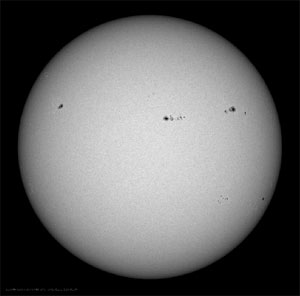Today’s the eclipse! I’m excited, though our weather here in Boulder has been fairly touch-and-go the past few weeks. I’m hoping for clear skies so I can see it; I got my eclipse glasses in the mail yesterday, so I’m all set. Locally, CU Boulder is holding a viewing in the football stadium! That’s a pretty nifty idea. As a reminder, the eclipse begins at 20:56 UTC (13:56 Pacific US time) on May 20, and ends at 02:49 UTC May 21 (19:49 on May 20 Pacific time).
I have links in an earlier post on where and when to watch (and yesterday I posted about why the “Supermoon” two weeks ago guarantees today’s eclipse being annular).
Observing the Sun during an eclipse can be tricky, since it’s very bright and can damage your eyes. Wikipedia has an excellent article about this. Something I want to make special note of: during the deepest eclipse, when the Sun is blocked the most, is ironically the most dangerous time to look at it with your unaided eye. Your pupil dilates (opens wide), letting in more light, but the parts of the Sun not blocked by the Moon are still just as intense. That makes it easier to damage your eye, so be very careful.
Of course, you shouldn’t look at the Sun with binoculars or through a telescope! That’ll destroy your eyes – literally – so seriously, it’s not recommended. The only exception is if you have the proper equipment designed specifically to view the Sun. Sky and Telescope’s site has a great rundown of how to observe the eclipse safely, including what equipment you can use.
For more on safe observations, check out Mr. Eclipse’s page, where he has a thorough list of how-tos. The websites io9 and for Astronomy Magazine have some good info, too.
Want an optometrist’s opinion? Here you go. Or you can try some of the tricks listed at The Exploratorium.
 If you want to photograph the eclipse, again Mr. Eclipse has great stuff, and this You Tube video demonstrates making a Sun filter for your camera out of a Pop Tart bag! That’s not for your eyes; it’s just for taking pictures (and while some websites say it’s OK for cameras, your mileage may vary – and DO NOT USE THIS for binoculars or telescopes because it does not block enough light to be effective).
If you want to photograph the eclipse, again Mr. Eclipse has great stuff, and this You Tube video demonstrates making a Sun filter for your camera out of a Pop Tart bag! That’s not for your eyes; it’s just for taking pictures (and while some websites say it’s OK for cameras, your mileage may vary – and DO NOT USE THIS for binoculars or telescopes because it does not block enough light to be effective).
The picture here is of the Sun from just this morning, taken by NASA’s Solar Dynamics Observatory. It’s just to give you a reference of what the unblocked Sun looks like. There are some good-sized sunspots today, so they’ll provide a pretty contract and a nice background to the eclipse. To get a current picture, go to the SDO site and you’ll see it there (click the drop-down menu under the picture and select “HMI Intensitygram” to get the visible light view).
You can watch the eclipse online, too. Sky and Telescope has some info on that, and as I understand it NASA will have some live feeds on their Sun-Earth Connection site. The Japanese space mission Hinode will be watching the eclipse, too.
Finally, if you want a number of people to be able to see this event at the same time, the best way is to project the image of the Sun onto a wall or screen. Here’s a video with a very simple and clever method that I may try myself tomorrow. All you need is foil and a makeup (or other flat) mirror:
Cool! It’s essentially a pinhole camera with a bigger hole but a longer focal length, so you achieve the same results.
I hope everyone has clear skies and good, safe viewing of this wonderful event!
Image credit: NASA/SDO